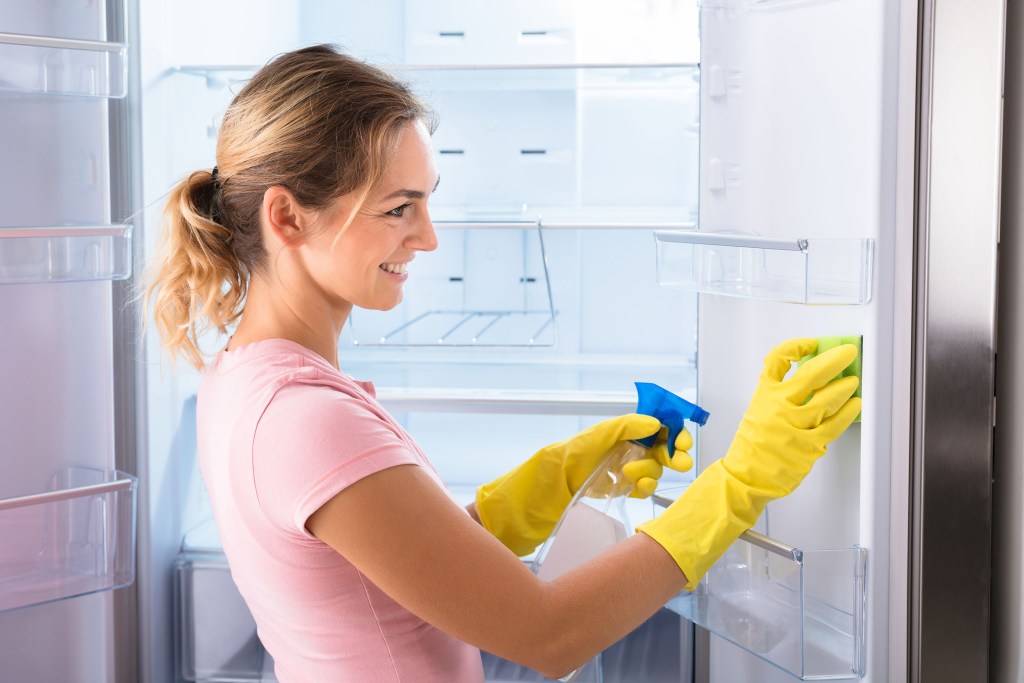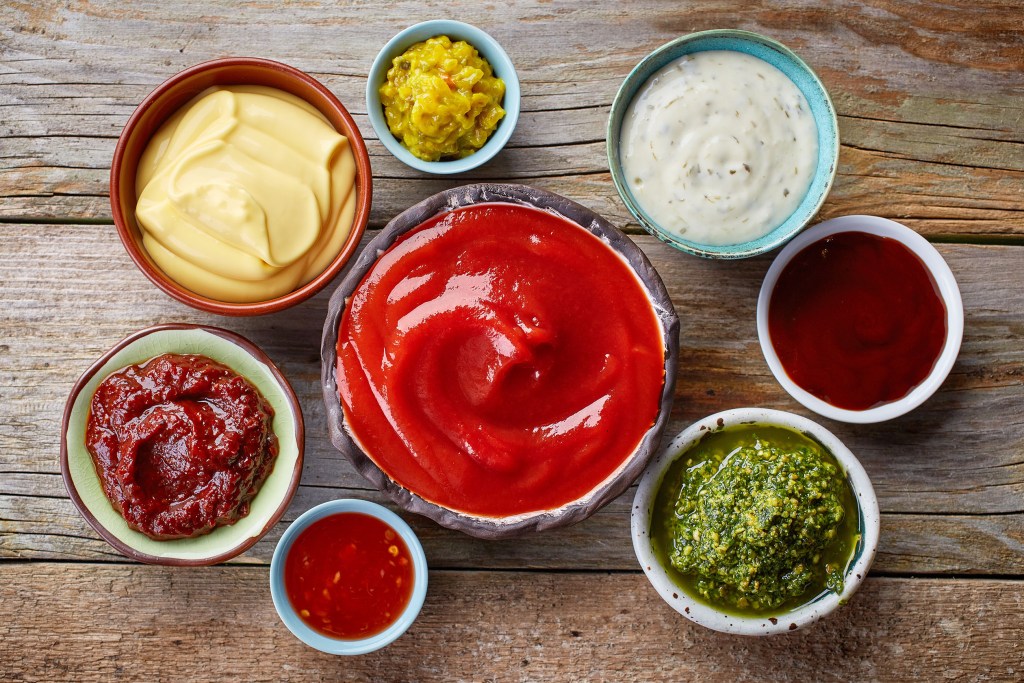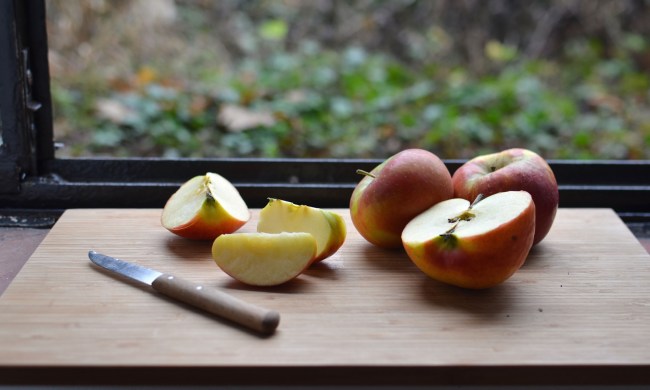Nobody likes a sticky kitchen mess. They’re hard to clean up, plus they can attract all sorts of pests. But if you’re a condiment lover, you’re probably overly familiar with these spills. At some point, you’ve probably opened your pantry to a mysterious puddle forming on the shelf. These messes, while annoying, are fortunately pretty easy to avert with a bit of creativity and planning. Keep reading to learn more about cleaning up and preventing messes from condiments in your refrigerator and pantry.

Clean up the mess
Before you take any measures to prevent spillage, clean up any existing messes. Wipe up any fresh spills using a paper towel or reusable cloth. If the residue is sticky or tough to remove, wet a cloth with hot water and lay it on top of the stain to soften it. After five minutes (or longer for stuck-on messes), you should be able to wipe it off with ease. You can use your favorite store-bought cleaner or try this DIY, all-natural kitchen cleaner from The Kitchn.
Supplies
• 16-oz spray bottle
• 1 cup distilled white vinegar
• 1 cup water
• 3 drops tea tree oil
• 3 drops grapefruit oil
Instructions
This cleaning product is super easy to make. Pour the vinegar and water into the spray bottle — you can use a funnel if needed. Then, slowly add the essential oil drops. Close the lid tightly and shake the bottle to allow the ingredients to combine fully. Spray as needed on your kitchen surfaces and wipe the area clean. The oil tends to separate and sit at the top of the mixture, so it helps to give it a good shake before every spritz.
Wipe off the bottle before storing
Condiment containers often leak from the opening at the top. With a twist-off cap, liquid can get stuck in the grooves of the lid. Over time, gravity causes the food to drip down, out of the cap and onto your shelf. Even flip-up tops can become covered with food after use. And when you close the cover, the excess can seep out of the sides and create a mess. However, you can easily avoid this situation by wiping down the opening and the lids of your sauce bottles before storing them to remove any excess food that could cause a potential spill. By cleaning the tops of the containers after every use, you can avoid most sticky leaks.

Make sure the container isn’t cracked
Leaky lids aren’t the only things that cause gooey pantry messes. Your bottle may be leaking because it is damaged. Containers can break while you’re transporting them from the grocery store to your home. But if the damage is minimal, you may not notice right away until you see a small puddle forming in your pantry. Freezing condiments can also damage the containers. While it may extend the shelf-life of your favorite sauce, the temperature change causes the liquid to expand and contract, potentially cracking the bottle in the process.
Inspect your condiment containers for signs of damage. If you find one, first check to ensure the air exposure hasn’t caused the food to spoil prematurely. If it’s still safe to eat, transfer the remaining sauce to an airtight container and dispose of the broken one.
Place something under the bottle to catch the runoff
Messes are hard to avoid altogether, especially in the kitchen. If you want to be extra cautious, place something under your condiments to collect any spillage and make cleaning your kitchen surfaces a breeze.
You have two main options for your spill catchers: reusable or disposable solutions. For those who want sturdy, easily cleanable options, place your messy condiments in ramekins, small bowls, or saucers. If you want something that you can throw away and replace when it gets dirty, consider laying down paper towels or placing the bottle inside cupcake liners. With refrigerated sauces, you can use Alton Brown’s technique. Reuse the bottom of an empty egg carton to keep bottles in place while stored upside-down and catch any food that dribbles out.
No meal is complete without your favorite condiment. But unfortunately, the sticky sauces can be some of the messiest items in your kitchen. No matter where you store them, it seems like these containers are always leaking. When undertaking the de-gunking process, you want to start with a clean surface. Then, wipe down the bottle openings and lids after every use. Look for cracks in the containers, and place something underneath the bottles to catch any dribbles. With these simple steps, you can protect your kitchen surfaces and save more of your beloved condiments for mealtime
BlissMark provides information regarding health, wellness, and beauty. The information within this article is not intended to be medical advice. Before starting any diet or exercise routine, consult your physician. If you don’t have a primary care physician, the United States Health & Human Services department has a free online tool that can help you locate a clinic in your area. We are not medical professionals, have not verified or vetted any programs, and in no way intend our content to be anything more than informative and inspiring.



